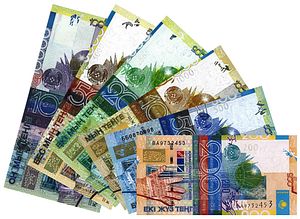Growth in Central Asia and the South Caucasus will slow to just around 1 percent this year and recover to below 3 percent next year, International Monetary Fund analysts wrote in a recent report, highlighting the negative effects of overreliance on commodity exports and remittances. In this environment, the IMF said, reforms are crucial to boost growth.
The eight post-Soviet countries have displayed a poor record in their attempts to diversify their economies. Oil and gas exporters, such as Kazakhstan, Turkmenistan, and Uzbekistan – but also Azerbaijan on the other side of the Caspian Sea – still suffer from low oil prices, which have slashed budget revenues in the past two years. Net energy importers, such as Tajikistan and Kyrgyzstan, have somewhat gained from lower prices for gas to power households and factories, but exports of gold and aluminum also became less valuable as a strong U.S. dollar eroded commodity prices over the past two years. In addition, the Russian ruble crisis cut the value of worker remittances, which traditionally represent around 50 percent of both countries’ GDP.
Currencies throughout the region have also suffered. In the second half of 2015, both Kazakhstan and Azerbaijan abandoned a peg to the U.S. dollar that had become unsustainable. Most other currencies were allowed to slide. Only repeated central bank interventions contained the hemorrhage, preventing mass protests by impoverished populations. Stories of unpaid salaries, job cuts, and declining state subsidies populate the local press on a weekly basis.
Against this backdrop, the IMF said, it will be harder for the region’s growth to pick up as seen after both the 1998 Russian ruble crisis and the 2007 global financial crisis. Without structural reforms, sustained growth will become unattainable.
“The region is at an important juncture, and policymakers need to take important steps toward promoting strong and inclusive growth and job creation, much needed to preserve and improve living standards,” the deputy director of the IMF’s Middle East and Central Asia department, Juha Kähkönen, told reporters in Almaty, Kazakhstan at the presentation of the report. In particular, the IMF recommended that the countries in the region make efforts to enhance the independence of central banks and to bolster financial sector oversight and crisis management policies.
Banking is in crisis in the region. In Kazakhstan, Bulat Utemuratov, the country’s richest man, became the majority shareholder of the new ForteBank, which absorbed two smaller banks marred by toxic assets in December 2014. Kenes Rakishev, a millionaire close to the elite, gradually acquired a majority stake in Kazkommertsbank, which recently rebranded as Qazkom.
Consolidation in Kazakhstan, which was recently imitated across the South Caucasus, has prevented more dramatic turns. Isolated banking crises in Tajikistan and Uzbekistan exposed the cracks of Central Asia’s faulty financial institutions. Tojiksodirotbank, Tajikistan’s second-largest bank, was put under the Central Bank’s administration in May and has still not emerged from its troubles. In April and May, Uzbekistan said it wanted to sell off its stakes in three banks that had a controversial business record, masking the sale with plans to privatize state assets.
Kazakhstan is a particular case and it’s no coincidence that the IMF chose Almaty, the region’s financial capital, as the venue for the presentation of the report. Tim Stanley, a senior partner for Russia and the CIS for Control Risks, said that the economic and social shocks that Kazakhstan has been buffeted by in recent years have had an impact on both industrial output and living standards, hitting the country’s overall stability.
“There are a number of risks: sustained weakness in commodities prices, or delays to output increases and investment, could prompt reconsideration of social spending plans and increase the risk of wider socio-economic unrest,” Stanley told The Diplomat in an email.
“It’s not all bad news, however. The much-delayed restart of the massive Kashagan oil project has finally taken place, and Tengizchevroil’s June announcement of a $36 billion investment plan has jump-started investment activity in the key oil producing areas along the Caspian coast, in the west of the country,” he said.
Oil, which recently climbed above $50 a barrel, is once again the primary engine for the economic recovery of the region’s largest economy. This is precisely what the IMF has warned against for years. As long as the countries in Central Asia and the South Caucasus continue to promise structural reforms and diversification, without delivering, the region’s economies will inevitably suffer every time that external shocks slash commodity prices or weaken trade with Russia and China. Almost 25 years after independence and after three major economic crises, countries in Central Asia and the South Caucasus stubbornly continue to keep all eggs in one basket.
































